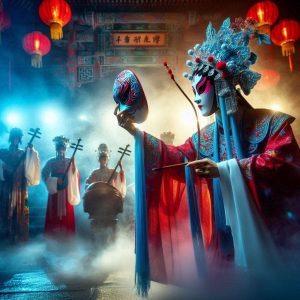Music and Mask Changing Performances
 In many Asian cultures, especially in Chinese opera, there is a unique art called “mask changing” or Bian Lian. This performance art involves skilled performers’ mask changing performance Singapore in the blink of an eye—sometimes without even touching their face. What makes this act even more captivating is the music that plays in the background. Together, music and mask changing create a theatrical experience that’s both powerful and mysterious.
In many Asian cultures, especially in Chinese opera, there is a unique art called “mask changing” or Bian Lian. This performance art involves skilled performers’ mask changing performance Singapore in the blink of an eye—sometimes without even touching their face. What makes this act even more captivating is the music that plays in the background. Together, music and mask changing create a theatrical experience that’s both powerful and mysterious.
Music Sets the Mood
Music is more than just a background element—it drives the entire performance. It signals when a mask is about to change. The rhythm builds tension, while the beat helps the performer stay in sync. Traditional instruments like the erhu or guzheng are often used, giving the performance a strong cultural feel. Even without understanding the language, the audience can feel the emotions through the sound. Fast beats might signal a change in energy or emotion, while slower parts may highlight sadness or suspense.
The Art of Mask Changing
The main attraction, of course, is the mask itself. Performers train for years to master the quick flicks and hidden movements needed to switch masks without being noticed. Each mask represents a different emotion—joy, anger, fear, surprise. When combined with music, the effect is dramatic. It’s as if the performer’s soul is shifting before your eyes. You don’t just see the mask change—you feel the story unfolding.
A Perfect Balance
Music and mask changing go hand in hand. The performer listens closely to the beat, often timing the change perfectly with a musical cue. The audience holds its breath, waiting for that exact moment. When it happens, it feels magical. The change happens so fast and so smoothly that it leaves everyone in awe. Without the music, the act would lose much of its timing and suspense.
In modern times, some performers have added new sounds or electronic music to update the traditional act. Still, the foundation remains the same: using sound and movement to tell a visual story. Whether in a small theater or a large stage, this combination continues to amaze audiences all over the world.